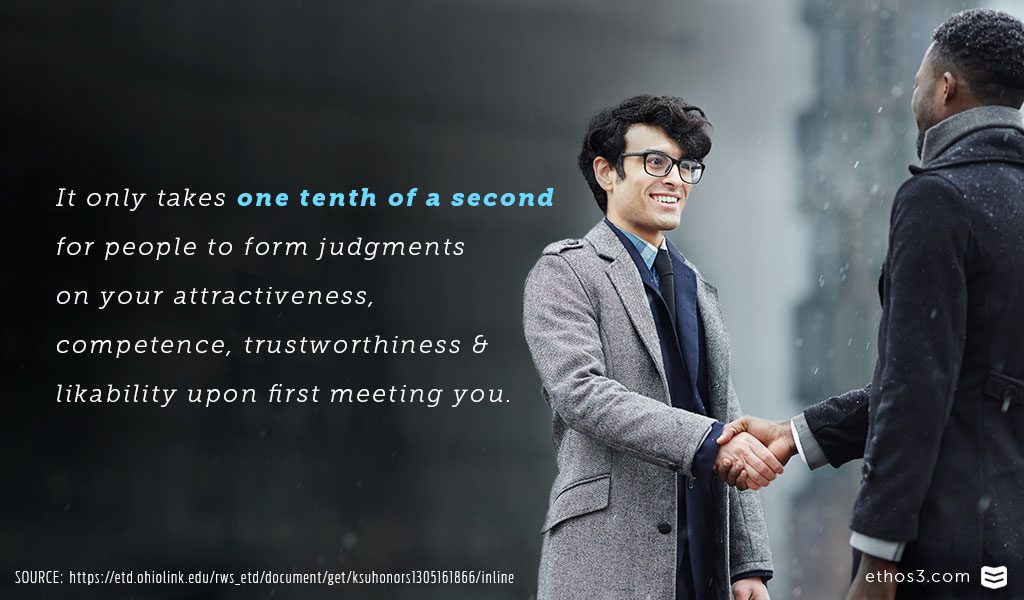The first time you meet a new person or group of people is an important moment. We all know that we can’t have a second first impression, whether it’s a date or a job interview. Same goes for presenters. Often times, presenters are speaking in front of people they do not know (sometimes with a few of their teammates there to help them set up). For first time presenters, this can be a challenge; but there are simple body language signals you can avoid to create a strong presentation first impression.
Research from Princeton University and Kent State University show that people make judgements on attractiveness, trustworthiness, competence and likability in one tenth of one second. And all these initial judgments are found through body language. One tenth of a second doesn’t give us much wiggle room when it comes to making sure our first impression is a good one.
3 Presentation Tips for Your First Impression

This week, Inc. Magazine published their 3 Ways to Destroy a First Impression. The same points they make work for the professional presenter:
Slouching
Having bad posture is not a good look for any professional. If you are standing on stage, you definitely want to make sure you standing up tall and straight. Practice in front of a mirror or an audience of peers before your speaking event. Remember to relax your shoulders and hold your chin up. Practice power poses to gain more confidence and get more comfortable with the posture. You wouldn’t want to watch someone drag their feet and look down at the floor while presenting. Slouching is sloppy; take pride in yourself and your work while you’re on stage.
No Eye Contact
In certain cultures, making eye contact is not a requirement for communicating. But in our culture, it definitely is. Making eye contact with your audience members can lead to a deeper connection and impact. But timing is important. Holding eye contact for too long can be uncomfortable. Holding eye contact for not long enough can make you appear nervous. The best way to practice eye contact is to keep it natural and act as if you are talking to your best friend or a family member.
A Bad Handshake
This is something every professional tries to avoid. A bad handshake can leave a bad impression. During your meet-and-greet before and after your presentation, you will want to network and make connections. Practicing your handshake may seem silly, but it’s good to get feedback. A weak handshake or a crushing handshake can turn potentials clients away.
First impressions are important for many aspects of our lives. It’s important for presenters to know how to make their first impression their best, since they will be in front of new audiences every time they present. Remember, you only have one tenth of a second to make sure people are seeing the best you.
More from the Ethos3 Blog:
The Complete Guide to Opening a Presentation
The 3 Best Body Language Tips for Presentations
Amy Cuddy: Your Body Language Shapes Who You Are